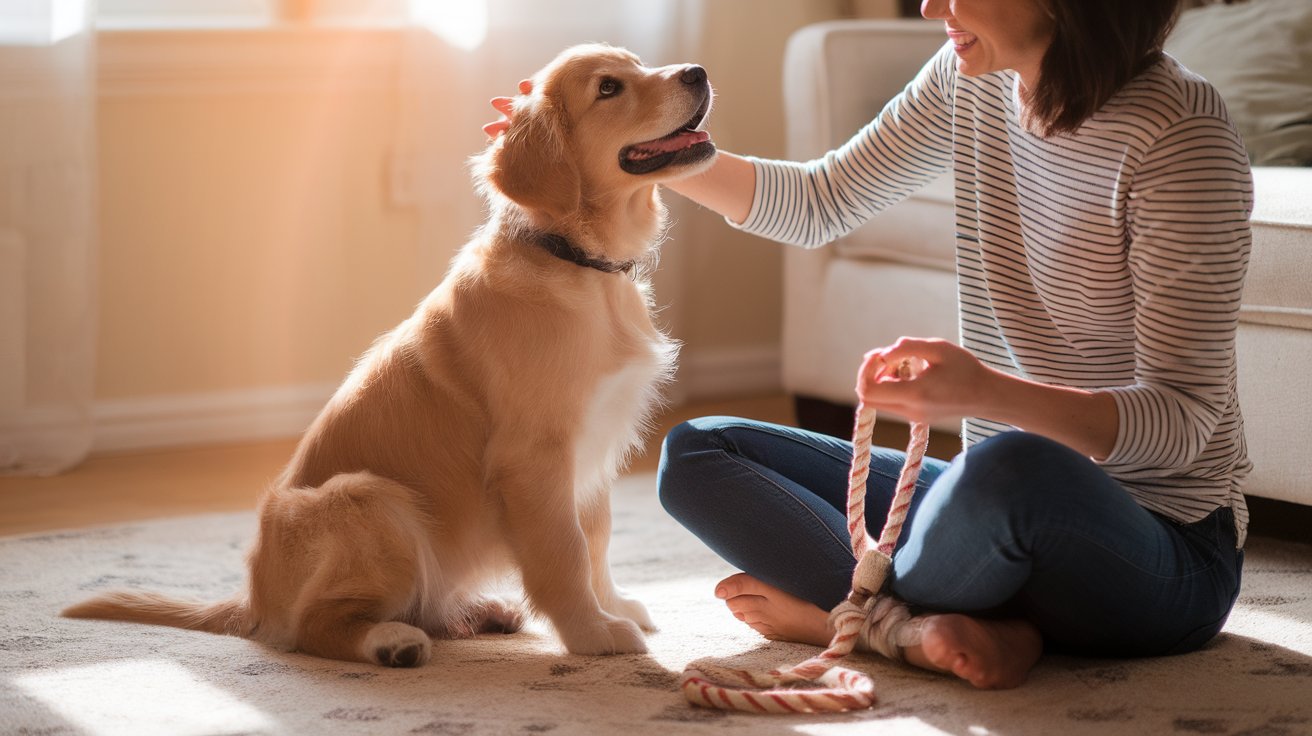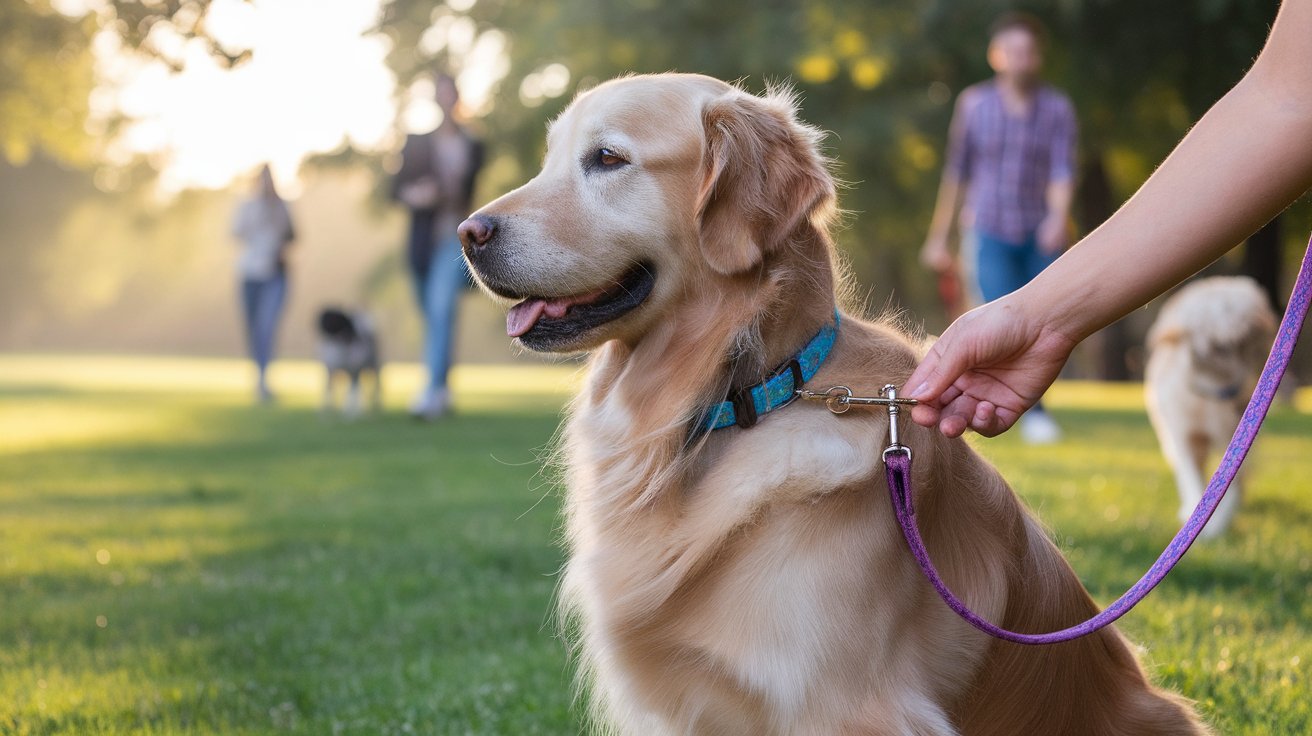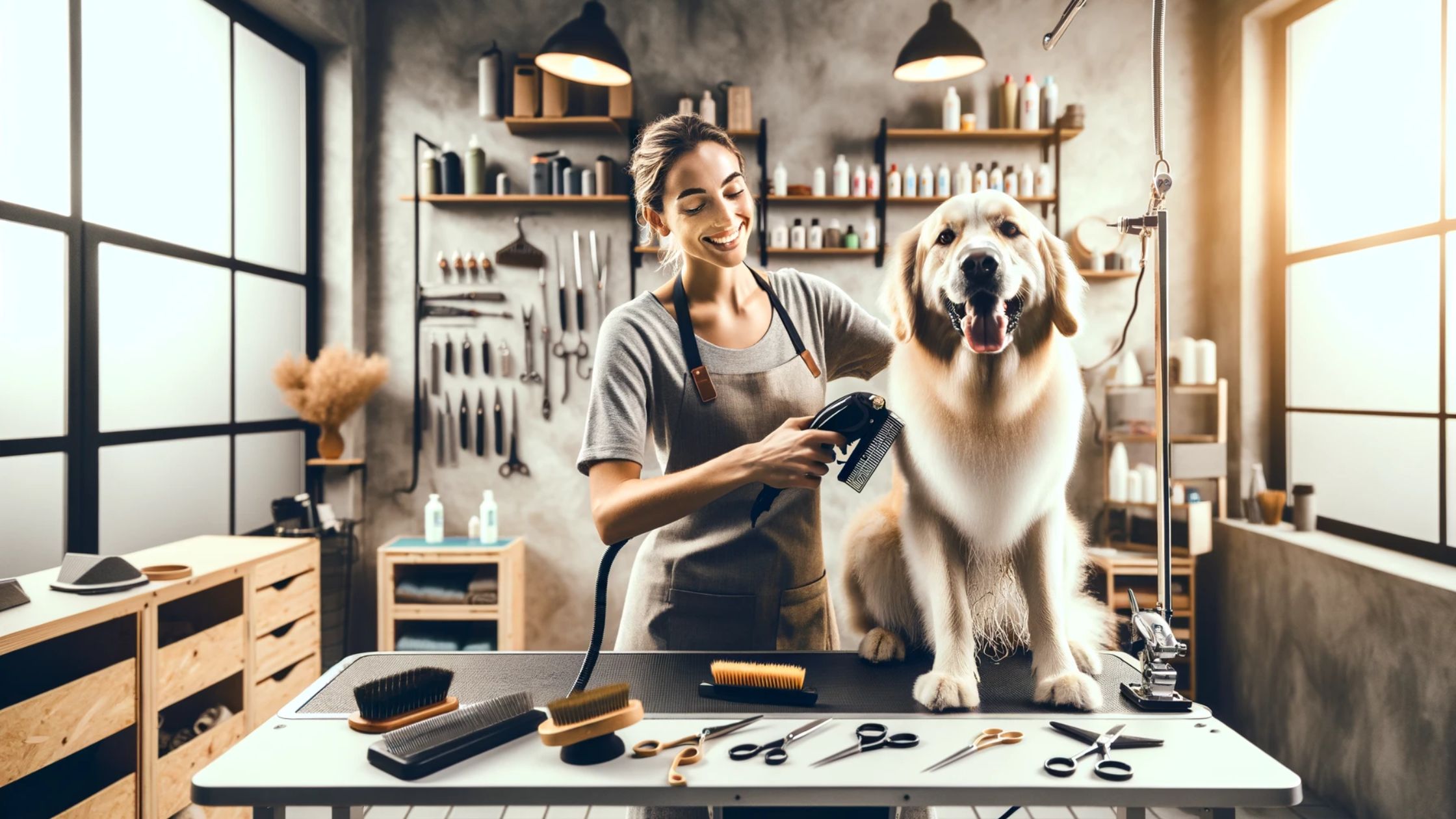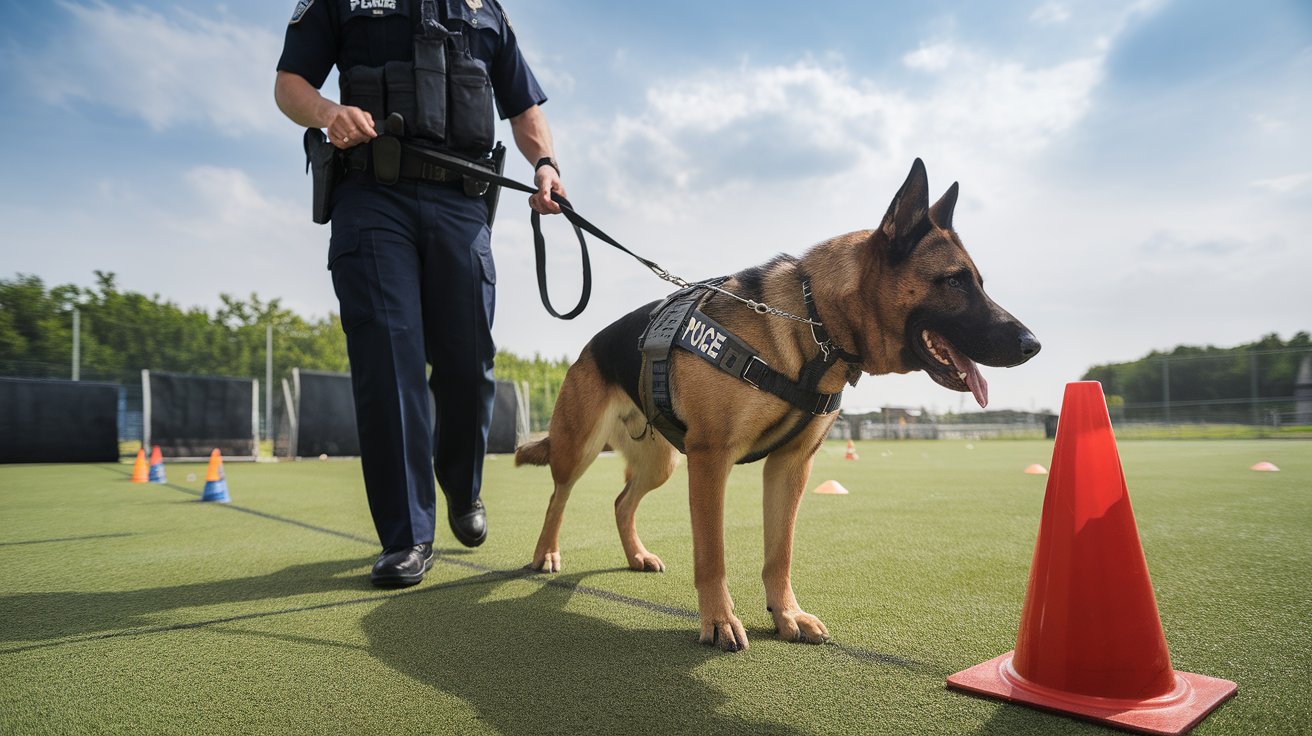Introduction
Bringing home a new puppy is an exciting experience, but it also comes with responsibilities that require preparation and understanding. From day one, it’s important to focus on creating a welcoming environment where your puppy feels secure and loved. Start by puppy-proofing your home to remove any potential hazards, ensuring a smooth transition for your new furry friend. By taking the time to get your puppy familiar with their new surroundings, you’ll begin laying the foundation for a strong bond that will only grow with time and patience.
Effective puppy training is key to building trust and connection. Simple activities like snuggle time or playing tug can help reinforce positive behaviors and promote bonding. It’s essential to pay attention to the signs your puppy is bonding with you, such as following your commands or seeking affection. The more time you spend with your puppy, the better you will understand their needs, ensuring a lasting and loving relationship.
Key Takeaways
- Puppy-proof your home to ensure a safe and welcoming environment, removing hazards and creating a cozy space for your new furry friend.
- Prepare the living space in advance by using barriers and introducing your puppy to its crate, making it a positive and secure experience.
- Stock up on essential supplies like treats, toys, and grooming tools to help your puppy feel secure and loved in their new surroundings.
- Understand that building a bond with your puppy takes time, patience, and a lot of care, especially during the early stages of training.
- Use consistent cues and commands to help your puppy learn expected behaviors, reinforcing them with praise and positive reinforcement.
- Engaging in shared activities such as playtime and training sessions helps build trust, respect, and a deeper connection with your puppy.
Setting the Stage for a Welcoming Home
When bringing a new puppy into your life, it’s important to create an environment that feels safe, cozy, and welcoming. This starts by considering how to puppy-proof your space, ensuring that your home is free from hazards or distractions that could overwhelm your new furry companion. Creating a calm atmosphere will help the puppy feel secure, making the transition smoother. Pay attention to small details such as setting up a designated area for sleep and play, as these will help establish trust. Over time, these small steps will lay the groundwork for building a strong bond and ensuring your pup feels comfortable in its new home.
How to Build a Strong Bond With Your New Puppy
Create a Safe and Welcoming Space
When bringing your new puppy home, focus on creating an environment where they feel secure and loved. Puppy-proof your home by removing hazards like electrical cords or sharp objects. Create a cozy area with a comfortable bed and a snuggly blanket. These small touches help your puppy feel safe, easing the transition and fostering a trusting relationship early on.Use Positive Reinforcement for Training
Training is key to building trust and a strong bond with your puppy. Using positive reinforcement, such as treats or praise, encourages good behavior. Stick to a consistent routine and simple commands to help your puppy understand what’s expected. Over time, this structure will help your puppy feel more secure and connected to you.Establish a Routine for Bonding
Routines are important for helping your puppy feel comfortable in their new environment. Consistent feeding times, regular potty breaks, and dedicated play sessions give your puppy a sense of stability. Regular interaction helps strengthen the bond, as they begin to associate you with fun, comfort, and care.Engage in Interactive Play
Play is a fantastic way to bond with your new puppy. Games like tug-of-war, fetch, or hide-and-seek not only provide physical exercise but also help build a strong emotional connection. Engaging in play helps your puppy learn to trust you and strengthens their bond through shared joy and excitement.Understand and Respect Your Puppy’s Signals
Puppies communicate through body language, vocalizations, and behavior. Understanding your puppy’s signals, such as wagging tails or anxious whining, helps you respond to their needs effectively. By paying attention and showing empathy, you build trust and help your puppy feel understood and supported.Provide Plenty of Cuddle and Rest Time
Cuddling is another simple but powerful way to build a bond with your puppy. After playtime or a walk, providing them with some cuddle time helps them relax and feel close to you. Additionally, ensuring your puppy gets plenty of rest is important for their development and well-being, which ultimately contributes to a stronger bond.
Preparing Your Habitat
Before your puppy arrives, preparing the living space is key to a successful homecoming. Begin by puppy-proofing your home, removing potential hazards such as electrical cords, sharp objects, or toxic plants. This will not only protect your new pup but will also prevent unwanted distractions that may cause stress. Use barriers like baby gates to create safe zones where the puppy can explore without getting into trouble. It’s also helpful to introduce your puppy to its crate early on, making it a positive experience by adding soft bedding and a favorite toy. By taking the time to prepare, you set the stage for a harmonious start to your life together.
Gathering Supplies and Creating a Comfortable Space
A well-prepared home isn’t complete without essential supplies that will make your puppy feel secure and loved. Stock up on items such as treats, chew toys, and grooming tools to help your pup feel at ease. Create a dedicated space with a cozy bed and a snuggly blanket to promote relaxation. Establishing a consistent routine is also crucial—regular feeding times, potty breaks, and play sessions help your puppy learn what to expect and begin to form a bond with you. The more you provide positive experiences, the stronger your relationship will become, helping your puppy feel that their new home is a place filled with love and security.
Managing Expectations as a New Puppy Owner
Bringing home a new puppy is an exciting experience, but it’s important to manage your expectations. Puppies require time, patience, and a lot of care. The first few days may feel overwhelming as you adjust to the new routines of feeding, potty breaks, and training. Remember that every puppy is unique, and the bond with your dog will grow over time. While some puppies may quickly adapt, others need a little longer to feel at home. Understanding that these early stages are part of building a strong relationship will help keep frustrations in check, allowing you to enjoy the journey of creating a loving, lifelong bond.
Case Study: Managing Expectations as a New Puppy Owner
When new puppy owners bring home their furry friend, many expect the experience to be all joy and cuddles. But the reality can be a bit more challenging. First-time owners often face tough surprises, like behavioral issues or the sheer amount of time and energy needed for puppy training. Some new owners find themselves feeling overwhelmed, realizing they underestimated the patience required to teach a puppy new skills and build a strong bond.
However, things can turn around with a bit of consistency and a lot of love. Using positive reinforcement—like giving treats for good behavior—and sticking to a routine can help ease the transition. Gradually, most new owners find that the bond with their puppy deepens, and those early frustrations fade away. Understanding puppy behavior, such as tail wagging or nervous whining, is key to building a solid and lasting connection.
Staying Positive and Patient
Staying positive is one of the most important things new puppy owners can do. Puppies take time to understand their environment and your expectations. It’s common to feel disheartened if your puppy seems distant or uninterested in the beginning, but patience is key. Focus on creating a cheerful and supportive space where your puppy feels secure. Use positive reinforcement like treats or toys to encourage desired behavior. Remember, bonding with your new puppy takes time. The goal is to make sure your pup associates you with comfort, affection, and fun. Over time, your patience will pay off as your bond becomes stronger and more rewarding.
Understanding Puppy Behavior
Understanding how puppies behave can greatly help in building a strong bond. Puppies don’t misbehave out of anger or spite—they’re simply learning about their new world. They might chew on furniture or have accidents because they’re still figuring things out. By learning to read your puppy’s body language, such as wagging tails or crouched postures, you can better understand what they need. When they seem anxious or confused, a calm demeanor and affection can reassure them. Puppies need routine, affection, and plenty of rest to feel safe. By recognizing their signals, you can create a trusting and supportive environment that strengthens your bond over time.
Learning to Communicate Effectively
Communication is key when building a relationship with your new puppy. Puppies, like humans, rely on signals to express their needs and emotions, and as a new owner, learning to interpret those signals is crucial. Whether it’s wagging their tail in excitement or whining when they feel anxious, your puppy is constantly communicating. By tuning into these signals and responding appropriately, you can begin to build a bond that fosters trust and understanding. This bond will not only help you navigate training more smoothly but will also set the foundation for a lifelong relationship built on clear communication and mutual respect.
Understanding Puppy Language
Puppies communicate in a variety of ways, and understanding their language is essential for creating a strong bond. Body language is a big part of how puppies express themselves. A wagging tail, perked ears, or crouching can tell you a lot about how they’re feeling. Vocalizations like whining, barking, or growling can also give clues to their emotional state. Pay attention to how your puppy reacts to different situations and stimuli. If they seem nervous in new surroundings, giving them affection and comfort can help ease their anxiety. By learning to recognize these signals, you’ll foster a sense of trust, which will strengthen your bond over time.
Using Consistent Cues and Commands
Consistency is a key element of effective communication with your puppy. When you use the same words and gestures repeatedly, your puppy will begin to associate them with specific behaviors. For example, using the word “sit” paired with a hand signal will eventually help your puppy learn what is expected. It’s important not to mix up commands or confuse your puppy with different terms. Clear, simple cues make it easier for them to understand and follow through. Reinforcing their success with praise or a small treat helps them feel rewarded. Over time, this consistency in communication will build familiarity and strengthen the bond between you and your puppy.
Patience, consistency, and positive reinforcement are the most important tools for successfully training your pup.” – Victoria Stilwell
Developing Your Relationship Through Shared Activities
One of the best ways to build a strong bond with your puppy is through shared activities. Puppies, like people, thrive on positive experiences, and engaging in fun, interactive tasks can help strengthen your relationship. Whether it’s playing a game of fetch, going for a walk, or teaching them new tricks, these activities create moments of joy and connection. Regular interaction helps your puppy learn to trust you, and it also gives them mental and physical stimulation. Over time, these shared experiences will create a sense of security and familiarity, which is key to developing a deep bond with your new furry friend.
Fun Ways to Bond with Your Puppy
Engaging your puppy in fun activities is a great way to build a strong connection. Simple games like tug-of-war, hide-and-seek, or playing fetch not only provide physical exercise but also offer bonding opportunities. During these activities, you can introduce treats or toys to keep your puppy excited and motivated. Additionally, short training sessions where you teach basic commands, such as “sit” or “stay,” help your puppy learn to follow your guidance, further strengthening the bond. Remember, the key is to make these activities enjoyable and stress-free, so your puppy associates them with love and affection, helping create a strong bond between the two of you.
Building Trust and Respect Through Play
Playtime is more than just fun—it’s a chance to build trust and respect between you and your puppy. Gentle play reinforces feelings of safety and security in their new environment, and by maintaining a calm and positive tone, you help your puppy feel at ease. Consistent daily play sessions foster routine, which is important for establishing trust. Over time, your puppy will come to expect and look forward to these moments, reinforcing that their new home is a safe and loving space. By engaging in regular play, you create an environment where your puppy can relax, learn, and feel confident, which is essential for a long-lasting relationship built on mutual respect.
Conclusion
Bringing home a puppy is a joyful experience filled with moments of puppy love and opportunities to bond with a puppy. However, it’s important to remember that building a strong relationship takes time, patience, and a clear understanding of your puppy’s needs. By focusing on cuddle sessions, consistent puppy training, and spending time with your puppy, you lay the groundwork for a trusting and loving connection. Simple acts like playtime and daily routines help your puppy learn to understand what is expected and feel secure in their new home.
As you continue to show your puppy affection and positive reinforcement, you’ll notice signs that your bond is growing stronger. Whether it’s during going for walks, playing together, or just relaxing with a nap, these moments reinforce the trust and communication needed for a lasting relationship. Keep in mind that every puppy is unique, and taking the time to get to know their temperament will help you create a nurturing environment for your new companion.













